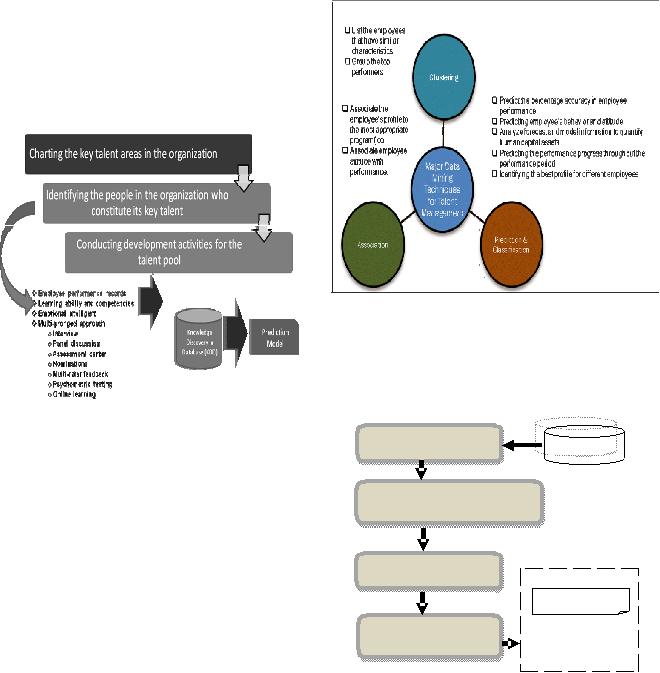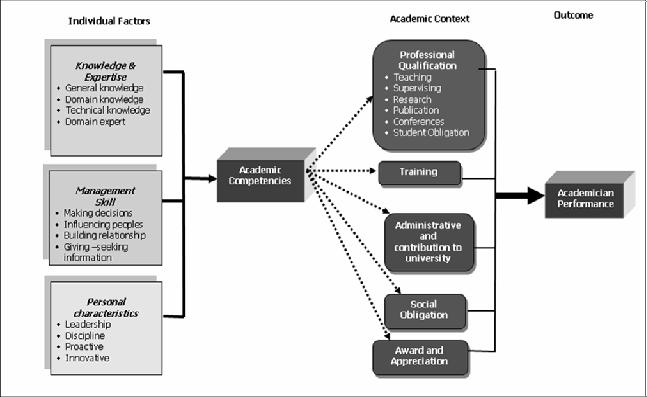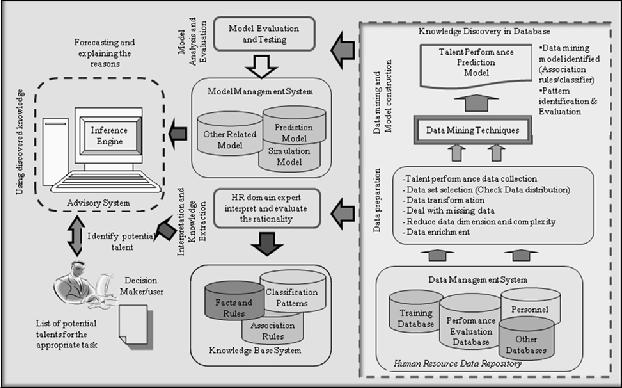REFERENCES
[1]Ranjan, J., Data Mining Techniques for better decisions in Human Resource Management Systems. International Journal of Business Information Systems, 2008. 3(5): p. 464-481.
[2]DeNisi, A.S. and R.W. Griffin, Human Resource Management. 2005, New York: Houghton Mifflin Company.
[3]A TP Track Research Report Talent Management: A State of the Art. 2005, Tower Perrin HR Services.
[4]Stavrou-Costea, E., The challenges of human resource management towards organizational effectiveness A comparative study in Southern EU. Journal of European Industrial, 2005. 29(2): p. 112-134.
[5]DeCenZo, D.A. and S.P. Robbins, Fundamentals of Human Resource Management. 8th Ed. ed. 2005, New York: John Wiley & Son.Inc. .
[6]Okpara, J.O. and P. Wynn, Human resource management practices in a transition economy: Challenges and prospects. Management Research News, 2008. 31(1): p. 57-76.
[7]Hooper, R.S., et al., Use of an Expert System in a personnel selection process. Expert Systems and Applications, 1998. 14(4): p. 425-432.
[8]Hamidah, J., H. Abdul Razak, and A.O. Zulaiha. Potential Intelligent Techniques in Human Resource Decision Support System (HR DSS). in Proceedings 3rd International Symposium on Information Technology 2008. Kuala Lumpur: IEEE
[9]Martinsons, M.G., Knowledge-based systems leverage human resource management expertise. International Journal of Manpower, 1995. 16(2): p. 17-34.
[10]Chien, C.F. and L.F. Chen, Data mining to improve personnel selection and enhance human capital: A case study in high-technology industry. Expert Systems and Applications, 2008. 34(1): p. 380-290.
[11]Tai, W.S. and C.C. Hsu (2005) A Realistic Personnel Selection Tool Based on Fuzzy Data Mining Method. http://www.atlantis- press.com/php/download_papaer?id=46 9/1/2008.
[12]Huang, L.C., et al. Applying fuzzy neural network in human resource selection system. in Proceeding NAFIPS '04. IEEE Annual Meeting of the Fuzzy information 2004. 2004.
[13]Huang, L.C., et al., A neural network modelling on human resource talent selection. International Journal of Human Resource Development and Management, 2001. 1(Number 2-4): p. 206-219.
[14]Quintero, A., D. Konare, and S. Pierre, Prototyping an Intelligent Decision Support System for improving urban infrastructures management. European Journal of Operational Research, 2005. 162(3): p. 654-672.
[15]Qian, Z., G.H. Huang, and C.W. Chan, Development of an intelligent decision support system for air pollution control at coal-fired power plants. Expert System with Applications, 2004. 26(3): p. 335-356.
[16]Viademonte, S. and F. Burstein, From Knowledge Discovery to computational Intelligent : A Framework for Intelligent Decision Support System. 2006, London: Springer London.
[17]Chen, K.K., et al., Constructing a Web-based Employee Training Expert System with Data Mining Approach, in Paper in The 9th IEEE International Conference on E-Commerce Technology and The 4th IEEE International Conference on Enterprise Computing, E- Commerce and E-Services (CEC-EEE 2007). 2007.
[18]Mehrabad, M.S. and M.F. Brojeny, The development of an expert system for effective selection and appointment of the jobs applicants in human resource management. Computers & Industrial Engineering, 2007. 53(2): p. 306-312.
[19]Liao, S.-H., A knowledge-based architecture for implementing collaborative problem-solving methods in military e-training. Expert Systems and Applications, 2007. In Press(Corrected Proof).
[20]Tung, K.Y., et al., Mining the Generation Xer's job attitudes by artificial neural network and decision tree - empirical evidence in Taiwan. Expert Systems and Applications, 2005. 29(4): p. 783-794.
[21]Chien, C.F. and L.F. Chen, Using Rough Set Theory to Recruit and Retain High-Potential Talents for Semiconductor Manufacturing.
IEEE Transactions on Semiconductor Manufacturing, 2007. 20(4): p. 528-541.
[22]Huang, M.J., Y.L. Tsou, and S.C. Lee, Integrating fuzzy data mining and fuzzy artificial neural networks for discovering implicit knowledge. Knowledge-Based Systems, 2006. 19(6): p. 396-403.
[23]Glenzer, C., A conceptual model of an interorganizational intelligent meeting-scheduler (IIMS). Strategic Information Systems, 2003. 12(1): p. 47-70.
[24]Bozbura, F.T., A. Beskese, and C. Kahraman, Prioritization of human capital measurement indicators using fuzzy AHP. Expert Systems and Applications, 2007. 32(4): p. 1100-1112.
[25]Haddawy, P. and N.T.N. Hien (2007) A decision support system for
evaluating |
international |
student |
applications. |
http://www.apqn.org/event/past/details/102/presentation/files/6_prof_ peter_haddaway_and%20-hyuyen_thi_ngoc_hien.pdf 9/1/2008.
[26]Pardos, Z., et al. (2007) The effect of Model Granularity on Student Performance Prediction using Bayesian Networks. http://www.educationaldatamining.org/um2007/Pardos.pdf
[27]Sullivan, W.G. and W.W. Claycombe Technological Fundamentals of forecasting. 1977, Virginia: Reston Publishing Company, Inc.
[28]Tso, G.K.F. and K.K.W. Yau, Predicting electricity energy comsumption : A comparison of regression analysis, decision tree and nerural networks. Energy, 2007. 32: p. 1761 - 1768.
[29]Delen, D., G. Walker, and A. Kadam, Predicting breast cancer survivability: A comparison of three data mining methods. Artificial Intelligent in Medicine, 2005. 34(2): p. 113-127.
[30]Chang, L.Y. and W.C. Chen, Data mining of tree-based models to analyze freeway accident frequency. Journal of Safety Research 2005.
36(4): p. 365-375.
[31]Becerra-Fernandez, I., S.H. Zanakis, and S. Walczak, Knowledge discovery techniques for predicting country investmnet risk.
Computers & Industrial Engineering, 2002. 43(4): p. 787-800.
[32]Enke, D. and S. Thawornwong, The use of data mining and neural networks for forecasting stock market returns. Expert Systems with Applications, 2005. 29(4): p. 927-940.
[33]Hong, T. and I. Han, Knowledge-based data mining of news information on the internet using cognitive maps and neural networks.
Expert Systems with Applications, 2002. 23(1): p. 1-8.
[34]Liew, P.L., et al., Comparison of artificial neural networks with logistic regression in predicition of Gallbladder disease among obese patients. Digestive and Liver Disease, 2007. 39(4): p. 356-362.
[35]Lin, F.Y. and S. McClean, A data mining approach to the prediction of corporate failure. Knowledge-Based Systems, 2001. 14(3-4): p. 189-195.
[36]Cardoso, G. and F. Gomide, Newspaper demand prediction and replacement model based on fuzzy clustering and rules. An International Journal on Information Sciences, 2007. 177(21): p. 4799- 4809.
[37]Chang, F.J. and Y.T. Chang, Adaptive neuro-fuzzy inference system for prediction of water level in reservoir. Advances in Water Resources, 2006. 29(1): p. 1-10.
[38]Balaguer, E., et al., Predicting service request in support centers based on nonlinear dynamics, ARMA modeling and neural networks.
Expert Systems with Applications, 2008. 34(1): p. 665-672.
[39]Kim, S.H. and H.J. Noh, Predictability of Interest Rates using data mining tools : A comparative analysis of Korea and the US. Expert Systems with Applications, 1997. 13(2): p. 85-95.
[40]Xue, Y. and D.E. Brown, Spatial analysis with preference specification of latent decision makers for criminal event prediction.
Decision Support Systems, 2006. 41(3): p. 560-573.
[41]Yavas, G., et al., A data mining approach for location prediction in mobile environments. Data & Knowledge Engineering, 2005. 54(2): p. 121-146.
[42]Kim, K.-j., Artificial Neural Networks with evolutionary instance selection for financial forecasting. Expert Systems with Applications, 2006. 30(3): p. 519-526.
[43]Chou, S.M., et al., Mining the breast cancer pattern using artificial neural networks and multivariate adaptive regression splines. Expert Systems with Applications, 2004. 27(1): p. 133-142.
[44]Han, J. and M. Kamber, Data Mining : Concepts and Techniques. 2006, San Francisco: Morgan Kaufmann Publisher.
[45]Lynne, M., Talent Management Value Imperatives : Strategies for Execution. 2005, The Conference Board.
[46]Cubbingham, I., Talent Management : Making it real. Development and Learning in Organizations, 2007. 21(2): p. 4-6.
[47]CHINA UPDATE (2007) HR News for Your Organization : The Tower Perrin Asia Talent Management Study. http://www.towersperrin.com
[48]Chen, S.H. and H.T. Lee, Performance evaluation model for project managers using managerial practices. International Journal of Project Management, 2007. 25: p. 543-551.


